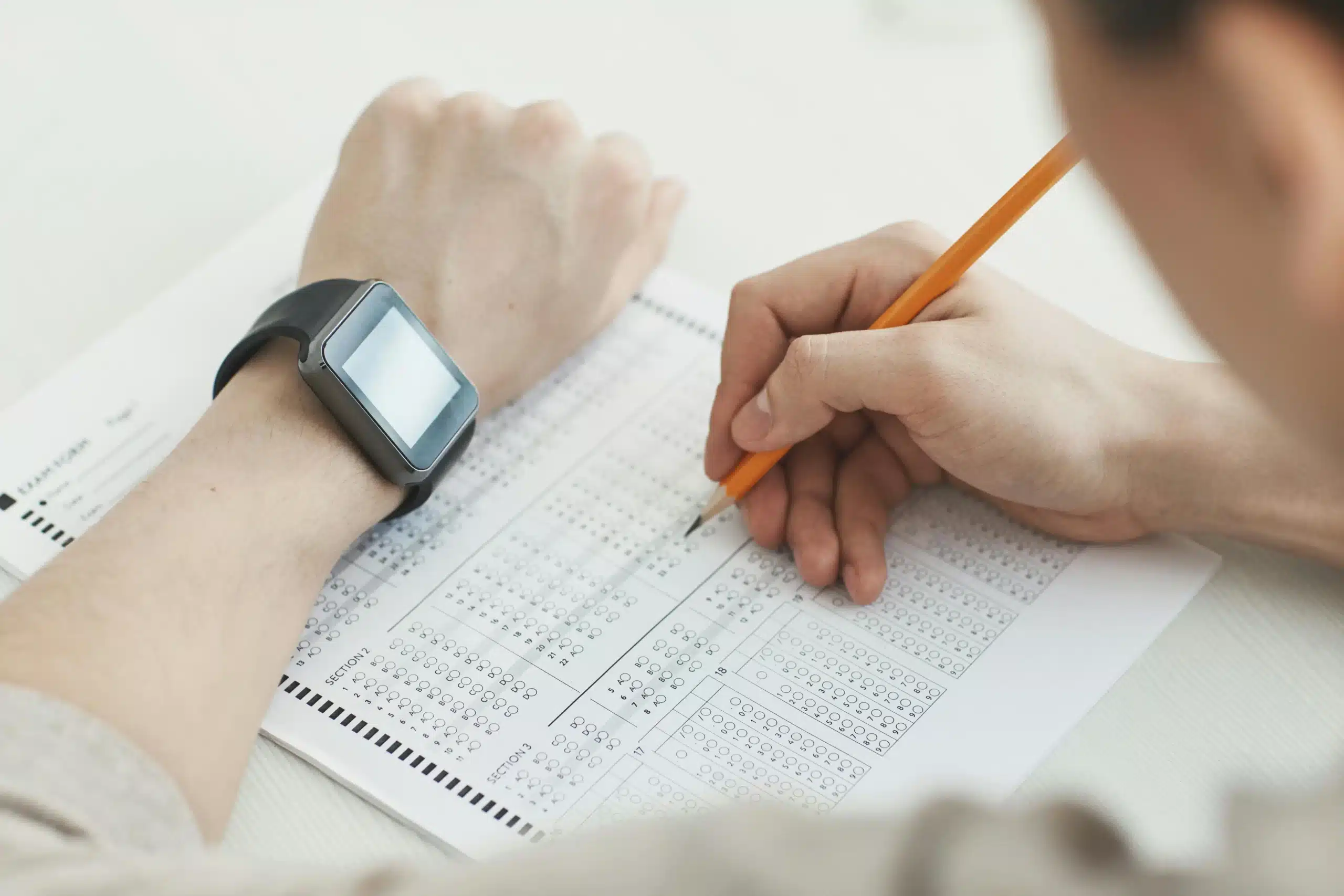
What Test Sections Are on the GMAT Exam?
UPDATED GMAT FORMAT FOR 2024
The GMAT Focus Edition is a computer adaptive entrance exam with three sections. You have 2 hours and 15 minutes for three sections: Quantitative Reasoning, Verbal Reasoning, and Data Insights.
Test-takers choose from among six possible section orders and can take one optional, 10-minute break. All three sections count equally toward your total score.
THE GMAT QUANTITATIVE REASONING SECTION
One of the three GMAT Focus sections is Quantitative Reasoning (QR).
The QR section consists of 21 questions in 45 minutes. These multiple-choice questions are similar to the “math skills” section of other standardized exams. They require students to solve a problem and choose from five possible answer choices. The GMAT Focus refers to this format as “problem solving.”
The following are some of the most common math topics that appear in the quant section:
- Arithmetic
- Algebra
- Exponents
- Percents
- Geometry
- Rates
- Probability
- Combinatorics
- Ratios
- Number Properties
THE GMAT VERBAL REASONING SECTION
The Verbal Reasoning section includes 23 questions in 45 minutes, with two distinct question types.
1) Reading Comprehension (RC). The GMAT includes 3-4 RC passages of varying lengths, interspersed throughout the Verbal Reasoning section. Passages often cover a topic such as economics, science, art, or history, followed by 3-4 questions. They never require any subject-specific knowledge.
On Reading Comprehension questions, test-takers will
- Identify primary purpose and main ideas
- Draw conclusions by inference
- Discern logical structure
- Recognize style and tone
For more, check out this article on how to study for GMAT Reading Comprehension or this video on how to approach RC:
2) Critical Reasoning (CR). CR accounts for roughly half of the questions on the Verbal Reasoning section. These types of questions follow a short passage that presents an argument. After reading that argument (typically less than 100 words), GMAT test-takers are asked to do tasks such as the following:
- Strengthen the argument
- Weaken the argument
- Identify the role of different pieces within the argument
- Identify assumptions underlying a conclusion
- Resolve an apparent paradox or discrepancy
- Infer a conclusion based on given facts
For more, check out this article on how to prepare for GMAT Critical Reasoning or this video on how to approach CR:
THE GMAT FOCUS DATA INSIGHTS (DI) SECTION
THE GMAT FOCUS DATA INSIGHTS (DI) SECTION
The GMAT Data Insights section consists of 20 questions in 45 minutes. Its complex questions require quantitative reasoning, verbal reasoning, and real-world data skills.
The following are question types that you can expect to see on the DI section:
Data Sufficiency — Logic- and sometimes math-based questions. These require students to evaluate whether the two statements are sufficient to answer the question.
Table Analysis — These questions feature an Excel-like table, but with various layers of logic or math added.
Graphics Interpretation — Read graphs – sometimes bizarre ones – and answer questions.
Two-Part Analysis — You’ll select two answers for each question. These can require quant skills, verbal skills, logic skills, or a combination of these.
Multi-source Reasoning — The GMAT’s best firehose: a group of several questions based on text, tables, and graphs.
For more on how to approach the Data Insights section, check out this video:
GMAT SECTION ORDER
You can take the three sections of the GMAT Focus in whichever order you prefer. Overall, this gives you six possible section orders (there’s a miniature combinations question for you!). No section order is “perfect” for everyone—it comes down to personal preference.
When thinking through your ideal section order on test day, you should consider two main factors.
- Are you likely to feel nervous at the beginning? Then start with a section that will give you the most confidence.
- Are you likely to feel exhausted at the end? Then finish with a section that requires less brainpower.
You also have the option for one 10-minute break between any of the sections. That can help you refocus for the next part of the test, so choose strategically.
WHAT IS AN ADAPTIVE TEST, AND WHY ARE SOME GMAT SECTIONS ADAPTIVE?
All three sections of the GMAT Focus are adaptive. That means questions change based on your answers. If you get a bunch of questions wrong, the test will adapt and show you easier questions. If you answer correctly, on the other hand, the questions will get harder.
Essentially, as you move through the questions, the GMAT adjusts to your skill level. This allows the exam to efficiently reveal a wider range of scores with a smaller number of test questions.
For more on how to manage your time on an adaptive test, check out this video:
Need more help?
GMAT Ninja provides the world’s most efficient GMAT, GRE, and EA tutoring services. Founded by a lifelong teacher with perfect scores, GMAT Ninja always uncovers the REAL issues holding your score back—even if they’re not what you expect.
We design a custom study plan around you: your brain, your goals, and your timeline. Additionally, our private tutors track progress and keep you accountable. Start your personalized GMAT tutoring journey today.
Want to learn more about the GMAT?
- New to the GMAT? Here’s a pile of articles about the logistics and fundamentals of the exam.
- How to Find a Good Private GMAT Tutor
- Our beginner’s guides to Reading Comprehension and Critical Reasoning
- A 12-minute video on how to approach the GMAT Data Insights section
- Our free, complete GMAT video course, featuring videos for all three sections of the GMAT Focus Edition
